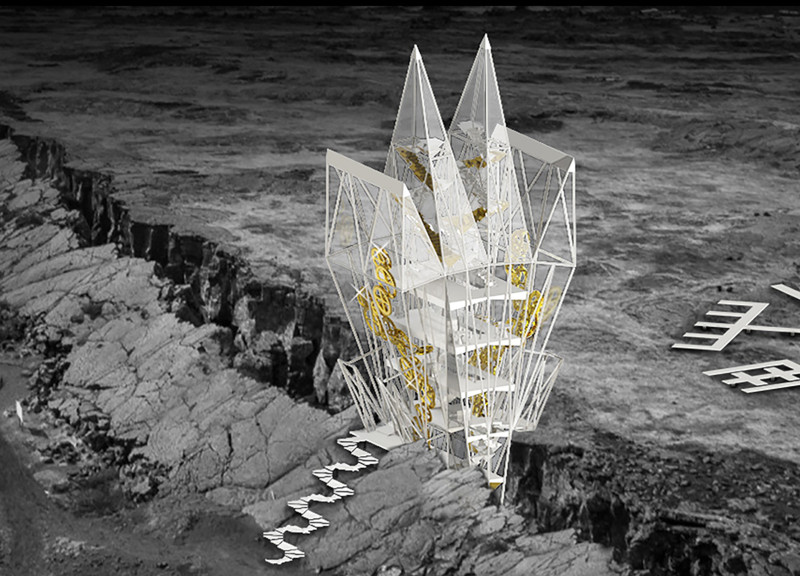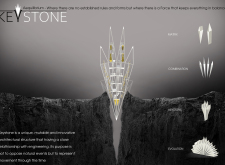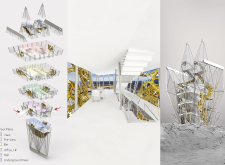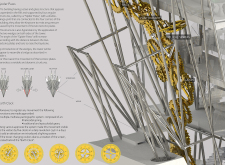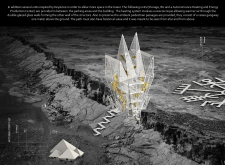5 key facts about this project
Aequilibrium explores balance, fluidity, and adaptation within its design. Set in a vibrant landscape, the structure includes spaces for leisure, work, and observation. The concept focuses on movement through time, moving away from traditional architectural boundaries while showcasing the forces that maintain equilibrium in both nature and human-made environments.
Structural Integrity
At the center of the design is the Keystone structure, a unique form that closely integrates engineering principles. This element embodies movement instead of resisting natural forces, demonstrating a responsive approach to architecture. Its design allows for flexibility, adapting to the changes in the surrounding environment.
Spatial Configuration
The project consists of several functional areas including a View, Pre-View, Bar, Office, Hall, and Underground View. This varied layout fosters user interaction, creating a multifunctional environment that serves different needs and activities. Each space is designed with care to enhance the experience of those who use it, promoting movement and connection among visitors.
Dynamic Elements
The Pantograph, or Spider Paws, is a notable visual feature supporting the building and creating a sense of suspension. These angular structures are connected with double-hinge joints, allowing the design to adapt under the pressure of tectonic movements. The use of wedges on either side adds stability while enabling the structure to respond dynamically to its environment.
Environmental Systems
In addition to the main structure, there are geothermal systems and auxiliary units for storage, restrooms, and heating and energy production. These units are positioned strategically between parking and the main building, improving spatial efficiency and functionality. The innovative heating system circulates warmer air through double-glazed walls, enhancing energy use while keeping the interior comfortable.
Elevated pedestrian pathways are incorporated to facilitate easy movement and maintain views of the landscape. This design approach enriches the overall experience of the space, allowing users to navigate freely while enjoying their surroundings.


